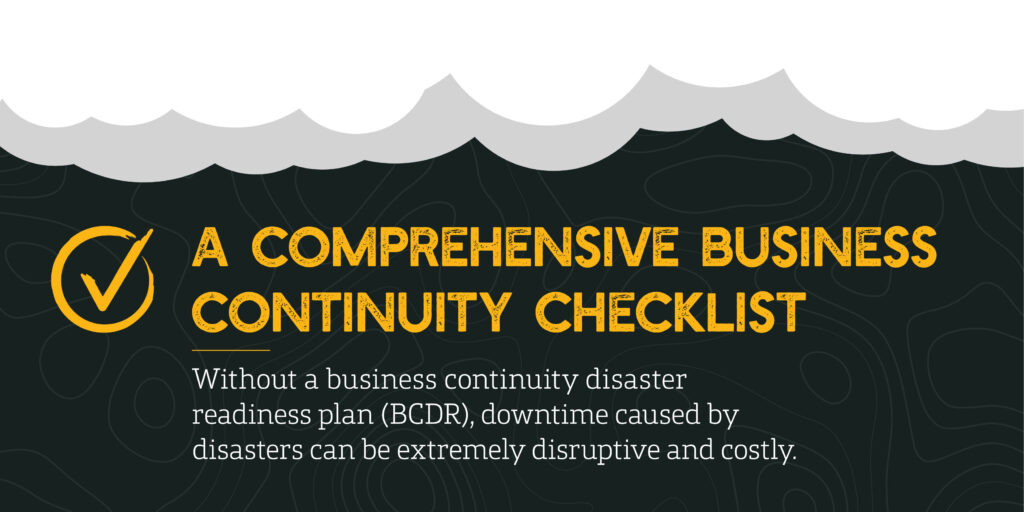
Summary:
It has been a very cold start to the year. For much of the U.S., we are bombarded with headlines stating, “Deep freeze continues”, “Brace for more below-freezing temperatures” and “Another cold front on way.” These news articles serve as a reminder that even the quiet of winter can bring extreme weather conditions that can cause disruption to our daily lives and our ability to do business.
As much as we like to think of our technology being invincible, we know that it isn’t. Severe weather conditions can have a negative impact on our technology, and our ability to manage it all, which is why important to have preventative measures in place to avoid the damaging affect that hot and cold weather can have on our equipment, offices and people.
Ensuring business continuity is not just a goal; it’s a crucial necessity. Because when business continuity is threatened, the downtime caused by disasters can be extremely disruptive and costly. For enterprises, the estimated cost of downtime is significant, ranging from several hundred to thousands of dollars per minute. The actual cost for your company hinges on the unique nature and size of your business operations.
Calculating the cost of business disruption
To grasp the magnitude of these costs, we must factor in the following elements when calculating the potential cost of interruption to business. We must consider how unplanned downtime directly translates to revenue loss, impacting the financial health of your business, and how disruption often leads to decreased productivity among employees, affecting overall operational efficiency.
We must also be aware of the stress that downtime can place on employees, specifically your IT workforce, when systems fail, further hampering productivity. On the flip side, customers expect seamless services, and disturbances can lead to dissatisfaction, potentially causing long-term damage to customer and client relationships. What’s more, the entire brand can experience damage when negative perceptions become too frequent and challenging to overcome.
For more sensitive industries, regulatory noncompliance during downtime may even result in legal penalties, adding another layer of financial risk. And both internal and external service levels suffer during moments of disruption, impacting not only customer satisfaction but also internal processes.
To mitigate the consequences, organizations must be proactive and well-prepared. But where to start? Fortunately, there are simple steps you can take to minimize the risk of downtime and associated revenue loss, and ensure business operations run smoothly even during times of disruption. We have organized these steps into a comprehensive business continuity checklist for your consideration.
Why do you need a business continuity checklist?
To mitigate these substantial risks and safeguard your enterprise, implementing a business continuity disaster readiness Plan (BCDR) is imperative. A comprehensive checklist, like the one we are offering below, is designed to guide you through the necessary steps to fortify your business against potential risks, ensuring that you are well-prepared to handle any unforeseen events.
By identifying risks, establishing an emergency response team, formulating a communication strategy, protecting systems with the latest tools, conducting regular testing and updates, training staff and documenting processes, you can significantly reduce the impact of disruptions and keep your business resilient in the face of challenges.

